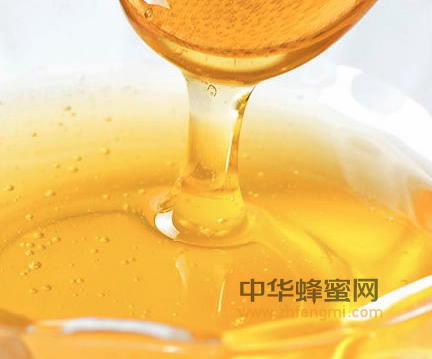蜂蜜标准
欧盟2001/110/EC蜂蜜标准
[ 5/5 ]
2016年09月21日 11时28分25秒 来源: 互联网
导读:为了解决各国因蜂蜜定义、类型和相关法律不同而导致的不正当竞争与消费误导,对共同的市场产生影响,2001年12月20日,欧盟在布鲁塞尔颁布了2001 110 EC有关蜂蜜的指令。
When Member States adopt these measures, these shall contain a reference to this Directive or shall be accompanied by such reference on the occasion of their official publication. The methods of making such reference shall be laid down by Member States.
Article 10
This Directive shall enter into force on the 20th day following that of its publication in the Official Journal of the European Communities.
Article 11
This Directive is addressed to the Member States.
Done at Brussels, 20 December 2001.
For the Council
The President
C. Picqué
(1) OJ C 231, 9.8.1996, p. 10.
(2) OJ C 279, 1.10.1999, p. 91.
(3) OJ C 56, 24.2.1997, p. 20.
(4) OJ L 221, 12.8.1974, p. 10. Directive as last amended by the 1985 Act of Accession of Spain and Portugal.
(5) OJ L 109, 6.5.2000, p. 29.
(6) OJ L 184, 17.7.1999, p. 23.
(7) OJ L 291, 19.11.1969, p. 9.
ANNEX I
NAMES, PRODUCT DESCRIPTIONS AND DEFINITIONS
1. Honey is the natural sweet substance produced by Apis mellifera bees from the nectar of plants or from secretions of living parts of plants or excretions of plant-sucking insects on the living parts of plants, which the bees collect, transform by combining with specific substances of their own, deposit, dehydrate, store and leave in honeycombs to ripen and mature.
2. The main types of honey are as follows:
(a) according to origin:
(i) blossom honey or nectar honey
Honey obtained from the nectar of plants;
(ii) honeydew honey
Honey obtained mainly from excretions of plant sucking insects (Hemiptera) on the living part of plants or secretions of living parts of plants;
(b) according to mode of production and/or presentation:
(iii) comb honey
Honey stored by bees in the cells of freshly built broodless combs or thin comb foundation sheets made solely of beeswax and sold in sealed whole combs or sections of such combs;
(iv) chunk honey or cut comb in honey
Honey which contains one or more pieces of comb honey;
(v) drained honey
Honey obtained by draining decapped broodless combs;
(vi) extracted honey
Honey obtained by centrifuging decapped broodless combs;
(vii) pressed honey
Honey obtained by pressing broodless combs with or without the application of moderate heat not exceeding 45 °C;
(viii) filtered honey
Honey obtained by removing foreign inorganic or organic matter in such a way as to result in the significant removal of pollen.
3. Baker's honey
Honey which is (a) suitable for industrial uses or as an ingredient in other foodstuffs which are then processed and (b) may:
- have a foreign taste or odour, or
- have begun to ferment or have fermented, or
- have been overheated.
ANNEX II
COMPOSITION CRITERIA FOR HONEY
Honey consists essentially of different sugars, predominantly fructose and glucose as well as other substances such as organic acids, enzymes and solid particles derived from honey collection. The colour of honey varies from nearly colourless to dark brown. The consistency can be fluid, viscous or partly to entirely crystallised. The flavour and aroma vary, but are derived from the plant origin.
When placed on the market as honey or used in any product intended for human consumption, honey shall not have added to it any food ingredient, including food additives, nor shall any other additions be made other than honey. Honey must, as far as possible, be free from organic or inorganic matters foreign to its composition. With the exception of point 3 of Annex I, it must not have any foreign tastes or odours, have begun to ferment, have an artificially changed acidity or have been heated in such a way that the natural enzymes have been either destroyed or significantly inactivated.
Without prejudice to Annex I, point 2(b)(viii), no pollen or constituent particular to honey may be removed except where this is unavoidable in the removal of foreign inorganic or organic matter.
When placed on the market as honey or used in any product intended for human consumption, honey must meet the following composition criteria:
1. Sugar content
1.1. Fructose and glucose content (sum of both)
>TABLE>
1.2. Sucrose content
>TABLE>
2. Moisture content
>TABLE>
3. Water-insoluble content
>TABLE>
4. Electrical conductivity
>TABLE>
5. Free acid
>TABLE>
6. Diastase activity and hydroxymethylfurfural content (HMF) determined after processing and blending
(a) Diastase activity (Schade scale)
>TABLE>
(b) HMF
>TABLE>
更多你需要的文章请点击: 欧盟
蜂蜜标准
2001
110
EC
relating
to
honey
本文链接:https://www.zhfengmi.com/show/22-10937.html [复制] (转载请注明出处、保留链接)
本文手机链接:https://m.zhfengmi.com/show-22-10937-p5
本文手机链接:https://m.zhfengmi.com/show-22-10937-p5




